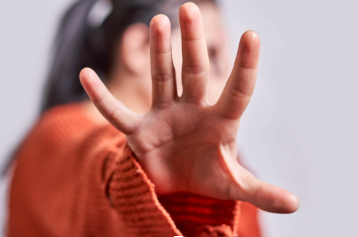Domestic Violence and Why it is Damaging America

March 13, 2023
Domestic violence is a global issue reaching across national boundaries as well as socio-economic, cultural, racial, and class distinctions. This problem is not only widely dispersed geographically, but its incidence is also extensive, making it a typical and accepted behavior. Domestic violence is widespread, deeply ingrained, and seriously impacts women’s health and well-being.
Domestic violence can be described as the power misused by one adult in a relationship to control another. It is the establishment of control and fear in a relationship through violence and other forms of abuse. This violence can take the form of physical assault, psychological abuse, social abuse, financial abuse, or sexual assault. The frequency of the violence can be on and off, occasional, or chronic.
Fast facts about Domestic Violence
Domestic Violence is a common problem in the United States, affecting an estimated 10 million people yearly; as many as one in four women and one in nine men are victims of domestic violence.
In the long run, high levels of domestic violence can decrease the number of women in the workforce, minimize women’s acquisition of skills and education, and result in less public investment overall as more general resources are channeled to health and judicial services.
More than 1 in 3 women, 35.6%, and more than 1 in 4 men, 28.5%, in the U.S. will experience rape, physical violence, and/or stalking by an intimate partner in their lifetime. Nearly 20 people per minute are physically abused by an intimate partner in the United States.
On a typical day, there are more than 20,000 phone calls placed to domestic violence hotlines nationwide. Domestic victimization is correlated with a higher rate of depression and suicidal behavior.
Dating Violence and Teen Domestic Violence
Domestic violence occurs in dating relationships as well as marriages. Women aged 16 to 24 experience domestic violence at the highest rate of any age group, almost 3 times the national average. Federal and many state laws define domestic violence as abuse perpetrated by a current or former spouse, co-habitant, or co-parent. This leaves dating partners without protections afforded to other current or former intimate partners, including access to protective orders and protection from gun violence. The rate of marriage has declined steeply over the last fifty years. People, particularly youth, are dating longer than in previous generations. As people get married later in life, dating violence will continue to rise.
Given the prevalence of domestic violence within these dating relationships and a shift in the structure of relationships today, communities must work together to ensure that victims of dating violence have access to resources and an increase in legal protections
According to CDC.gov, teens often think some behaviors, like teasing and name-calling, are a “normal” part of a relationship. However, these behaviors can become abusive and develop into serious forms of violence. Many teens do not report unhealthy behaviors because they are afraid to tell family and friends. Female students experienced higher rates of physical and sexual dating violence than male students. Students who identified as lesbian, gay, bisexual, transgender, or queer (LGBTQ) or those who were unsure of their gender identity experienced higher rates of physical and sexual dating violence compared to students who identified as heterosexual.
Domestic Violence and the Impact on Children
Domestic violence creates a hostile environment that can have devastating effects on children, both physical and emotional. Children exposed to domestic violence can become fearful and anxious, concerned for themselves, their siblings, and their parents.
Children exposed to violence may have difficulty paying attention in school and experience depression and withdrawal. They may blame themselves for the abuser’s actions or blame the victim. In the long run, children who witness or experience violence at home are much more likely to perpetuate the cycle of abuse in their relationships as they grow into adulthood.
Children who witness domestic violence may develop serious emotional, behavioral, developmental, or academic problems. As they develop, children and teens who grow up with domestic violence in the household are:
- more likely to use violence at school or community in response to perceived threats
- more likely to attempt suicide
- more likely to use substances
- more likely to commit crimes, especially sexual assault
- more likely to use violence to enhance their reputation and self-esteem
- more likely to become abusers in later life
There are a lot of forms of violence and abuse such as economic abuse, guns, physical abuse, sexual assault stalking, and harming animals. American, Indian/Alaskan Native women, teens, children, black communities, gender-based violence in rural communities, and people with disabilities are all the specific populations that experience domestic abuse. It is essential to recognize the signs of domestic violence and report the abuser if it is happening around you or to you.











